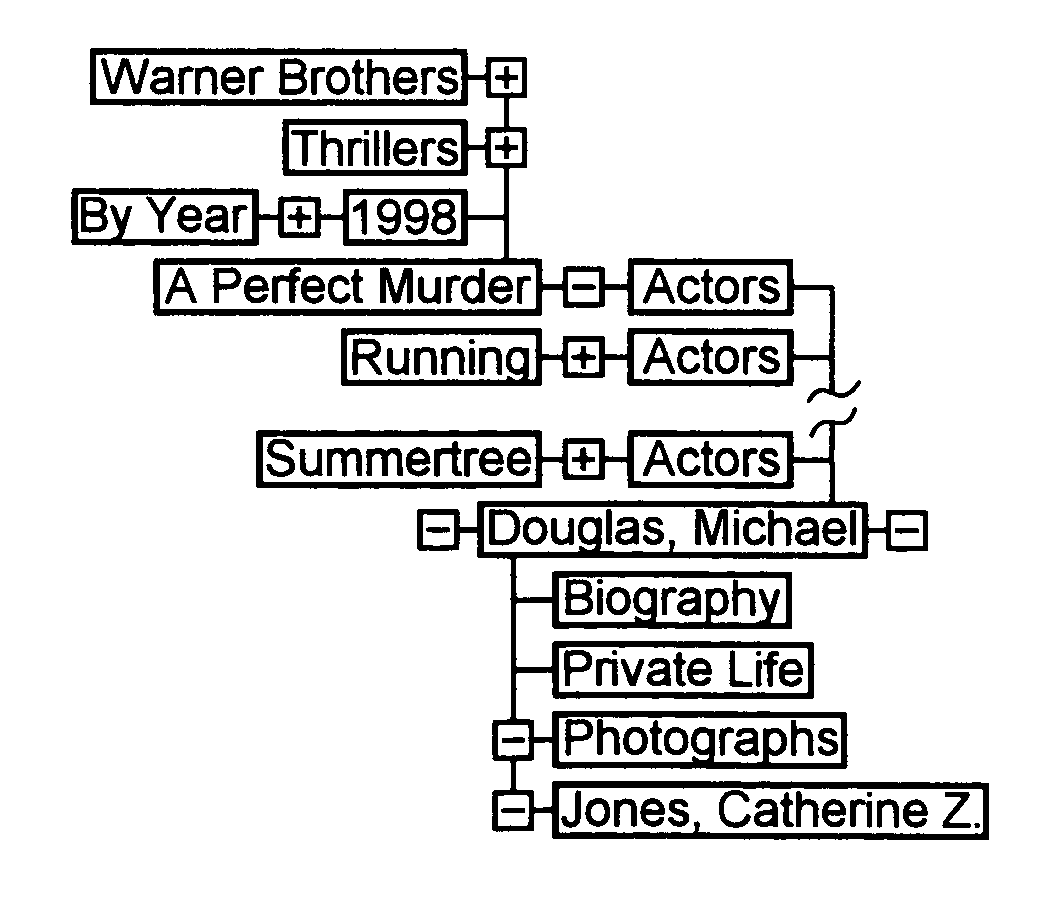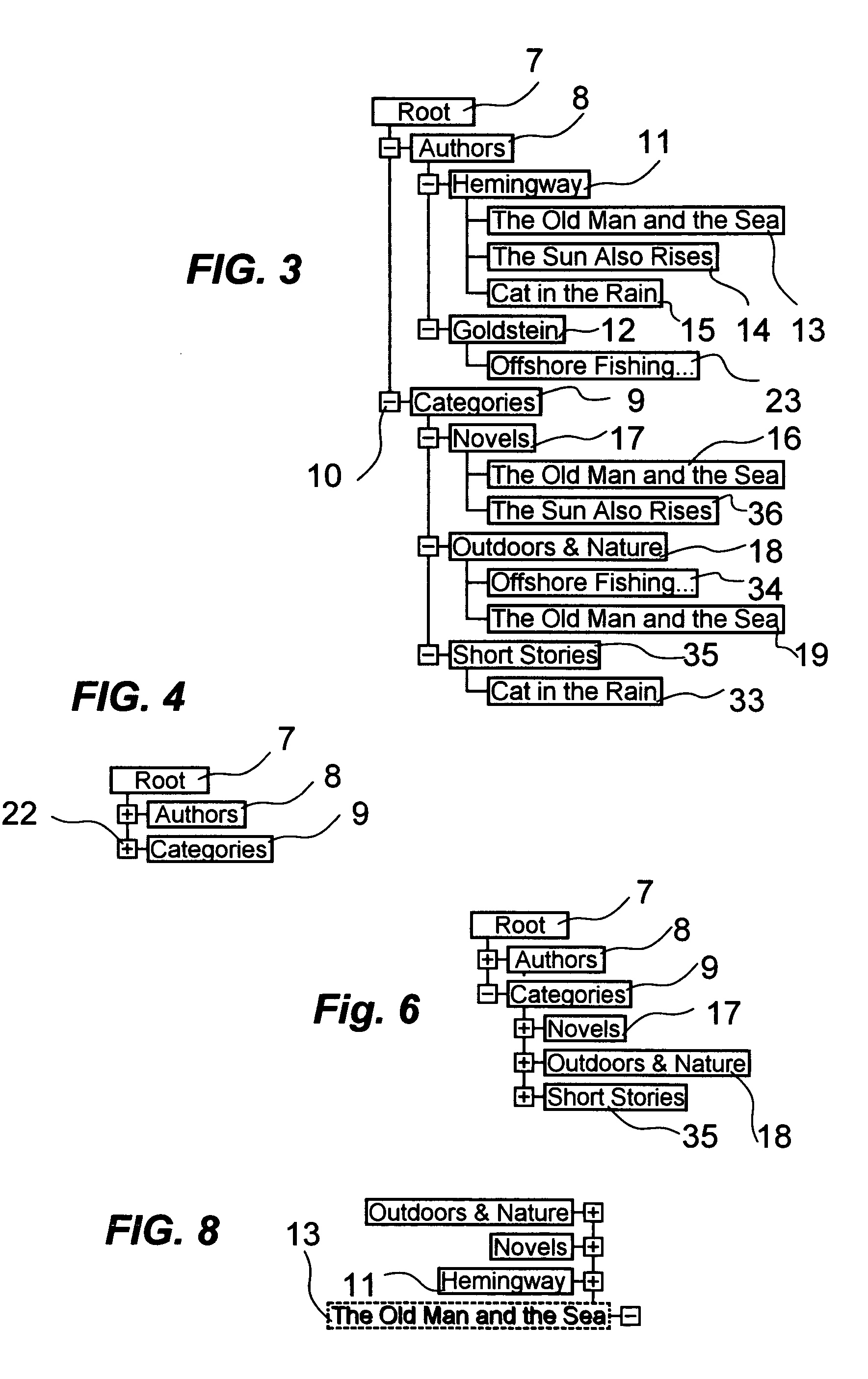Interface and method for exploring a collection of data
a data collection and interface technology, applied in the field of interfaces and a, can solve the problems of difficult to decide which would be the appropriate location for a document, affecting the quality of the collection,
- Summary
- Abstract
- Description
- Claims
- Application Information
AI Technical Summary
Benefits of technology
Problems solved by technology
Method used
Image
Examples
Embodiment Construction
General Features of the Interface and Internal Data Structure
[0055]A data collection to be explored using the interface according to the principles of this invention incorporates two basic components: Nodes and references. Additionally, supplementary documents can be handled. The term “node”, as used in the claims, is interpreted to mean a discrete piece of information, distinguishable from other pieces of information. The nodes of the data collection are associated with each other by references and may serve two purposes. Firstly, they can be a structural element, which means that a node has at least one reference pointing to the node, and at least one reference pointing away to another node. Secondly, they can hold additional information other that the name of the node. Thirdly, they can have one or more documents assigned. The information itself may be partially stored in the node, and partially in the document, or it can completely reside in the node or completely reside in the ...
PUM
 Login to View More
Login to View More Abstract
Description
Claims
Application Information
 Login to View More
Login to View More - R&D
- Intellectual Property
- Life Sciences
- Materials
- Tech Scout
- Unparalleled Data Quality
- Higher Quality Content
- 60% Fewer Hallucinations
Browse by: Latest US Patents, China's latest patents, Technical Efficacy Thesaurus, Application Domain, Technology Topic, Popular Technical Reports.
© 2025 PatSnap. All rights reserved.Legal|Privacy policy|Modern Slavery Act Transparency Statement|Sitemap|About US| Contact US: help@patsnap.com



